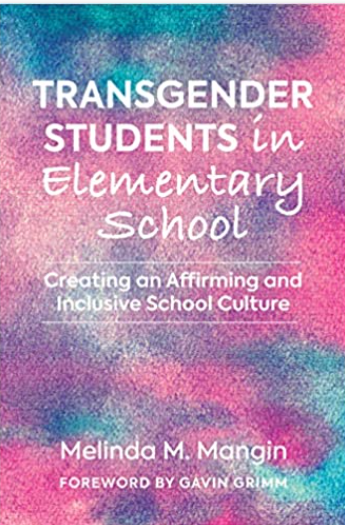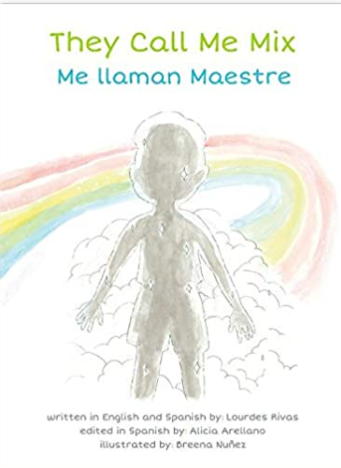What Are Pronouns?
Pronouns are used to refer to a person without using their name. There are different types of pronouns used to address a person’s gender identity. [AMZ-119]
Pronouns and Gender Identity
Pronouns do not determine a person’s gender identity.
Respecting Pronouns
“It is important to ask someone which pronouns they use and then to use them correctly.
- If you accidentally use the wrong pronouns and make a mistake, instead of making a big deal, just learn from it and keep trying.
- The most common gender pronouns are “she, her, and hers” and “he, him, and his.
- Pronouns are also called gender pronouns.
Youth
Gender pronouns are used to refer to gender identity, which is how someone feels in terms of masculine, feminine, somewhere in between or neither.
The most common gender pronouns are “she, her and hers” and “he, him and his.” For example, you can say: “She rode her bike to the store.” Some people may refer to these as “feminine” and “masculine” pronouns, but it’s important to remember that a person could use “she, her, hers” pronouns and not feel feminine or “he, him, his” pronouns and not feel masculine.
There are also people who identify as nonbinary, which means they don’t feel they fit into either a girl or boy category. In this case, someone might use pronouns like “ze” or “xie” (both pronounced “zee”) and “hir” (pronounced “here”): “Xie rode hir bike to the store.” “They” is also an option. While “they” often refers to a group of people, it can also be used to describe one person: “They rode their bike to the store.” In other cases, someone may prefer that people don’t use pronouns at all to refer to them, and that only their name be used: “Jason rode Jason’s bike to the store.”
There are many different pronouns that a person can use beyond the ones that have been mentioned here. It’s less important that you know them all and more important that you ask for someone’s pronouns and use the pronouns that a person requests.
FAQs
Sharing your pronouns and asking others to share their pronouns is a basic sign of respect. It shows you care about others’ humanity and gender identity. For some, pronouns may shift over time, so it’s a good idea to check in regularly to make sure you are being respectful.
It’s okay to ask someone for their pronouns if you don’t already know what they are. In fact, you might even want to make it a habit to ask people for their pronouns before they even have to tell you. Making assumptions about a person’s pronouns or actively ignoring someone’s pronouns could have harmful effects on their confidence and self-esteem.
If you ever mess up someone’s pronouns, no need to make a big deal about it! Just apologize and continue to work to do better. And if you need help, reach out to a trusted adult for support and assistance.
Parents
Gender is an important part of someone’s identity and young people may need some time to clarify how they identify (“gender identity”) as well as how they want to express themselves externally (“gender expression”). Gender pronouns are used to refer to the gender identity of someone.
“She, her and hers” and “he, him and his” are the most common gender pronouns used. Some people may refer to these as “feminine” and “masculine” pronouns, though a person could use “she, her, hers” and not feel feminine, and vice versa.
There are also people who identify as nonbinary; they don’t feel they fit into either a male or female category. In this case, someone might use other pronouns like “ze” or “xie” (both pronounced “zee”) and “hir” (pronounced “here”), or a whole host of other options. In addition, some people may use “they” as a pronoun, which in this case can be used to refer to an individual. In yet other cases, someone may prefer that no pronouns be used at all, and that only their name be used when speaking about them.
There are many different pronoun options to choose from. It’s less important that you know them all, and more important that you ask for and use the pronouns someone indicates are the right ones for them.
You can’t always know what a person’s pronouns are just by looking at them. As many young people experiment with gender expression (like clothes and hairstyle), others may confuse their pronouns or get them incorrect. It’s helpful to practice sharing your own pronouns, and normalize asking others what their pronouns are. Making assumptions about a person’s pronouns or actively ignoring someone’s pronouns could affect their confidence and self-esteem.
For some people, pronouns may shift over time. Checking in regularly can be a great way to make sure you’re being respectful. If you ever mess up a young person’s pronouns, there’s no need to make a big deal about it! Just apologize and continue to work on it. And in the same way we encourage young people to seek support when they struggle, don’t be afraid to seek additional resources to build your own understanding.
CONVERSATION STARTERS
When parents and caregivers engage in loving and supportive conversations with children about sexuality and related topics, it allows children to practice safe and healthy habits as they grow up. Talking with young people about pronouns and gender identity can be a useful way to let your child know that you are available for them if they have questions about their gender journey.
Below is some information about talking with young people about gender identity and pronouns:
It is far easier for a child to learn and practice a behavior if they see it being modeled by the adults in their lives. Take the time to learn more about gender diversity and why gender pronouns matter, and then begin modeling the practice of sharing and asking for pronouns. Invite your children to share their gender identity development process with you. For more support and information on how to do this, visit the National Institutes of Health website at https://www.edi.nih.gov/blog/communities/what-are-gender-pronouns-why-do-they-matter
Educators
Gender pronouns are used to refer to gender identity, which is how someone feels in terms of masculine, feminine, somewhere in between or neither.
“She, her and hers” and “he, him and his” are the most common gender pronouns used. Some people may refer to these as “feminine” and “masculine” pronouns, though a person could use “she, her, hers” and not feel feminine, and vice versa.
There are also people who identify as nonbinary; they don’t feel they fit into either a male or female category. In this case, someone might use other pronouns like “ze” or “xie” (both pronounced “zee”) and “hir” (pronounced “here”), or a whole host of other options. In addition, some people may use “they” as a pronoun, which in this case can be used to refer to an individual. In yet other cases, someone may prefer that no pronouns be used at all, and that only their name be used when speaking about them.
There are many different pronoun options to choose from. It’s less important that you know them all, and more important that you ask for and use the pronouns someone indicates are the right ones for them.
You can’t always know what a person’s pronouns are just by looking at them. As many young people experiment with gender expression (like clothes and hairstyle), others may confuse their pronouns or get them incorrect. It’s helpful to practice sharing your own pronouns, and normalize asking others what their pronouns are. Making assumptions about a person’s pronouns or actively ignoring someone’s pronouns could affect their confidence and self-esteem.
For some people, pronouns may shift over time. Checking in regularly can be a great way to make sure you’re being respectful. If you ever mess up a young person’s pronouns, there’s no need to make a big deal about it! Just apologize and continue to work on it. And in the same way we encourage young people to seek support when they struggle, don’t be afraid to seek additional resources to build your own understanding.
National Sex Education Standards
Distinguish between sex assigned at birth and gender identity and explain how they may or may not differ
Define and explain differences between cisgender, transgender, gender nonbinary, gender expansive, and gender identity
Identify trusted adults, including parents and caregivers, whom students can ask questions about gender, gender-role stereotypes, gender identity, and gender expression
Demonstrate ways to promote dignity and respect for people of all genders, gender expressions, and gender identities, including other students, their family members, and members of the school community
Differentiate between sexual orientation and gender identity
Demonstrate ways to communicate respectfully with and about people of all gender identities
Differentiate between sex assigned at birth, gender identity, and gender expression
International Technical Guidance on Sexuality Education
Discussion Questions
- What are some traditional gender roles shown in the video?
- How might people express their gender in ways that don’t match traditional gender roles?
- How do you think it would feel to be able to express your gender in a way that doesn’t match traditional gender roles? Why?
- What are some things you can do if you see a person being bullied for expressing their gender in a way that does not match traditional gender roles?


